Think Electric Vehicles Are New? They’ve Been Around Since The 19th Century
Electric vehicles have a surprisingly long history, dating back to some of the earliest automobiles ever invented. Electric vehicles were more convenient and user-friendly than early gas-powered cars because they didn’t require a crank to start the engine.
The first automobile show in America, held at Madison Square Garden in New York City in 1900, featured three competing technologies of the time: the internal combustion engine, steam power, and electricity.
Out of the 160 automobiles on display at that historic car show, a third of them were electric. This is quite a contrast to the situation in 2023, when electric vehicles made up only 7.6 percent of total vehicle sales in the United States.
Here’s a look at some key milestones in the development of electric vehicles during the 19th century.
1832: Robert Anderson invented the first ‘electric carriage’
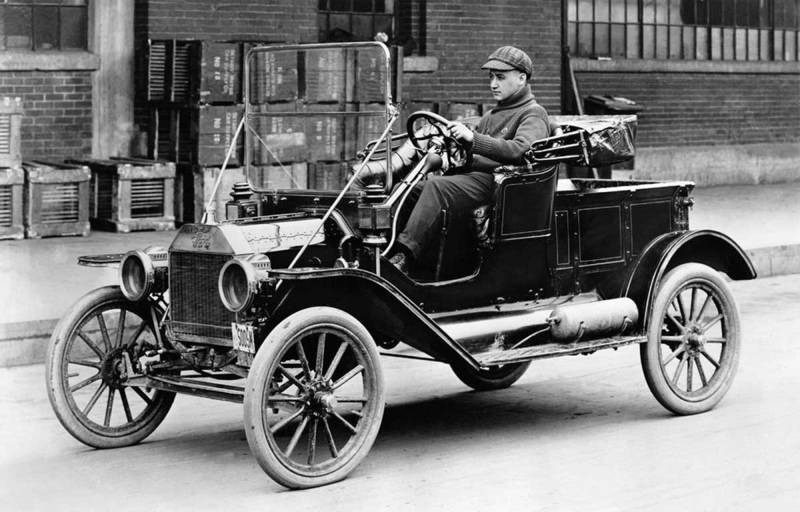
Scottish inventor Robert Anderson is a somewhat mysterious figure in history, but he is credited with creating the first “horseless carriage” powered by an electric motor.
While details about his life are scarce, Anderson’s invention in the 1830s marks a significant moment in automotive history.
During that time, batteries were still very primitive, so Anderson’s electric carriage likely didn’t travel very fast or far.
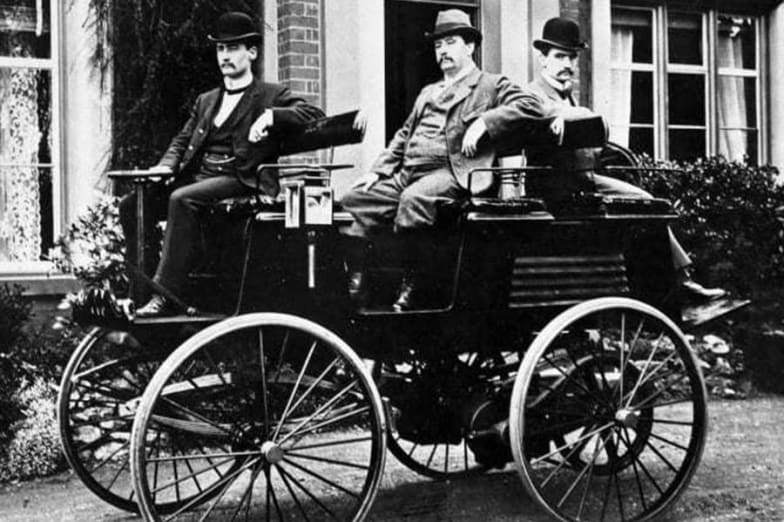
However, as Kevin A. Wilson, author of The Electric Vehicle Revolution: The Past, Present and Future of EVs, points out, this invention is considered the birth of the electric car.
“[Anderson’s invention] qualifies as a vehicle, although you can argue that it doesn’t qualify as a car,” says Wilson. “It is an electric vehicle capable of moving itself forward, so that’s significant.”
This early creation laid the groundwork for the electric vehicles we know today, even if it was just a small step in the long journey of automotive innovation.
1859: Gaston Planté created the first rechargeable battery

The progress of electric vehicles in the 19th century is closely linked to advancements in battery technology. While groundbreaking, Robert Anderson’s electric carriage wasn’t practical due to its battery, which could only be used once before needing to be replaced.
This limitation changed in 1859 when French chemist Gaston Planté developed the lead-acid battery, a significant improvement that could be recharged indefinitely.

Planté showcased his lead-acid battery to the French Academy of Sciences in 1860.
This new battery not only provided a more powerful charge than earlier versions but also had the revolutionary ability to be recharged by reversing the flow of electrons from an external electrical source.
The standard 12V car battery used in today’s gas-powered vehicles is based on Planté’s lead-acid technology.
“Without the ability to recharge, there’s no battery that’s going to last long enough to be useful in an electric vehicle,” says Kevin A. Wilson. “The only modern electric vehicle that used a disposable, non-rechargeable battery was NASA’s lunar rover.”
1881: Camille Faure invented a lighter, more durable battery

Planté’s rechargeable battery was indeed a revolutionary technology, but its size and weight made it impractical for early automobiles.
The real advancement for electric vehicles came with a lighter and more compact version of the lead-acid battery, invented by Camille Faure, another brilliant French chemist.
Faure, who had sharpened his skills as a chemical engineer in an explosives factory, coated the lead plates of his battery with sulfates.
This significantly boosted the battery’s efficiency. Faure’s design was not only smaller but also powerful enough that multiple batteries could be installed in an electric carriage or cart without adding excessive weight.
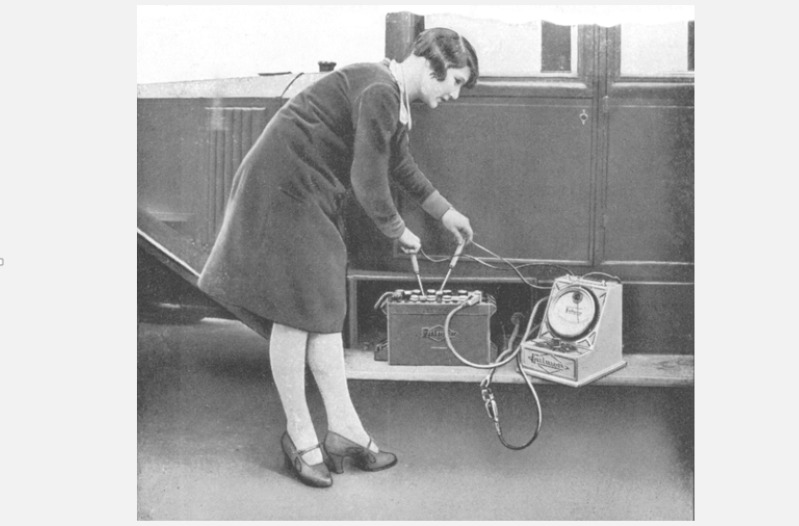
Kevin A. Wilson points out that Faure’s French patent was filed almost at the same time as a similar invention by American inventor Charles Bush.
This timing underscores how inventors across the world were passionately exploring innovations in electricity and motorization, driving forward the development of electric vehicles.
1883: The first electric-powered automobile emerged
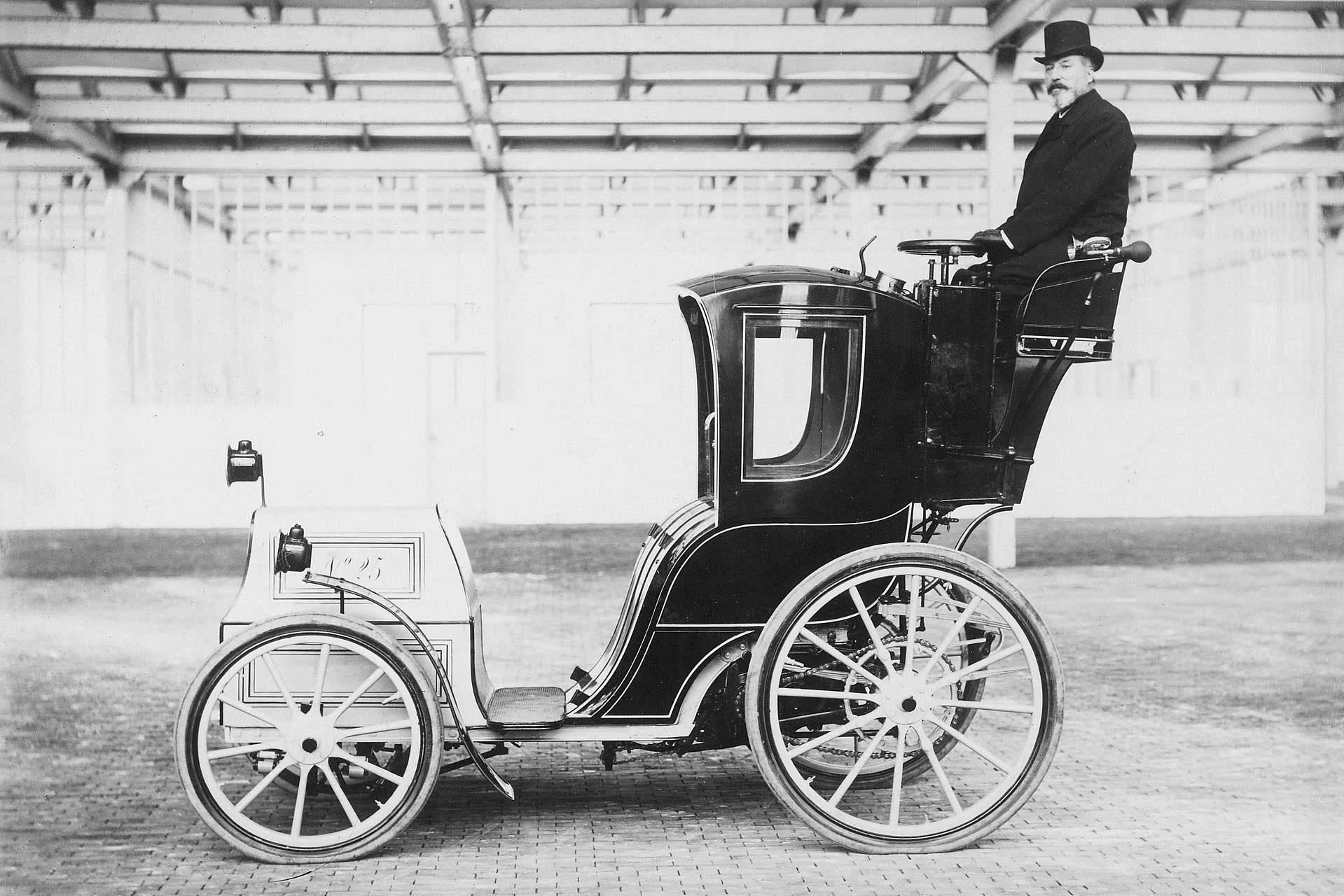
The invention of the first automobile is commonly attributed to Carl Benz, who famously patented his three-wheeled, gasoline-powered motor car in 1886.
But what if the true pioneer of automotive history was actually a French carriage maker who beat Benz to the road by three years?
Charles Jeantaud, a skilled Parisian carriage maker, was a forward-thinker who partnered with chemist Camille Faure. As early as 1881, Jeantaud began tinkering with Faure’s innovative, lightweight lead-acid batteries, using them to power his custom-built buggies.
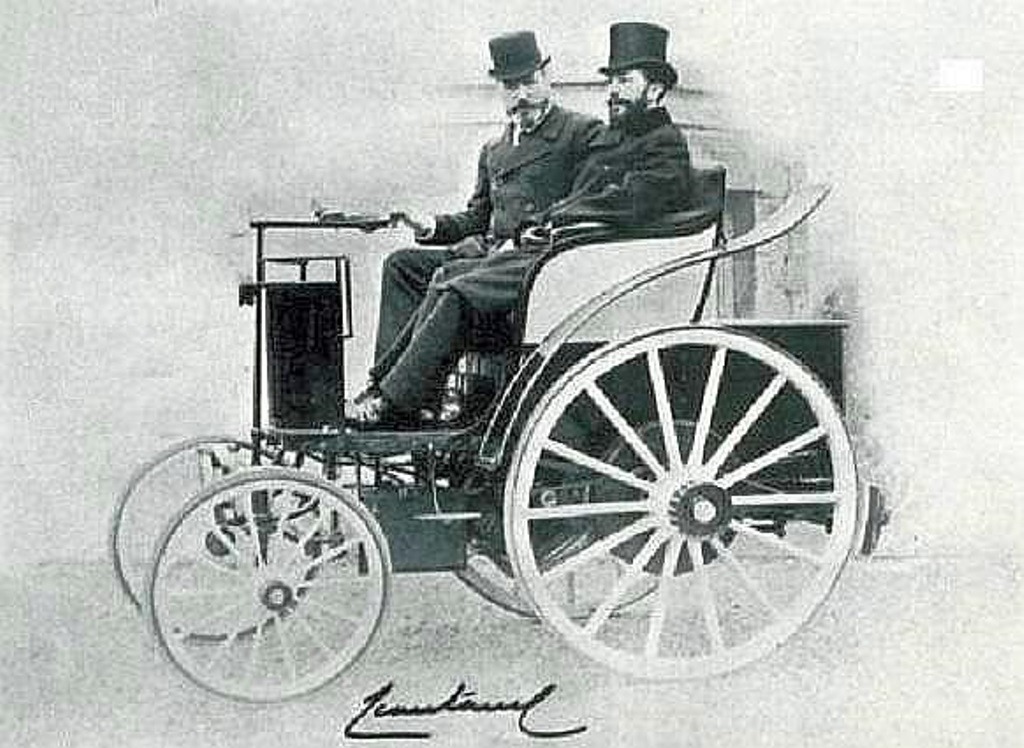
“In the 19th century, a carriage maker was a local guy who you contracted with to build a carriage for your horse,” says Wilson.
“When people like Jeantaud made the transition to vehicles, they were local people who built horseless carriages for a particular market area like Paris.”
Records hint that Jeantaud was not just experimenting but actively building and selling electric buggies by 1883—three years before Benz’s motor car made its grand entrance in Germany.
Despite this, Jeantaud’s work was largely overshadowed, possibly because the first mass-produced vehicles bearing the Jeantaud name didn’t roll out until 1893.
1893: America saw its first electric car on display
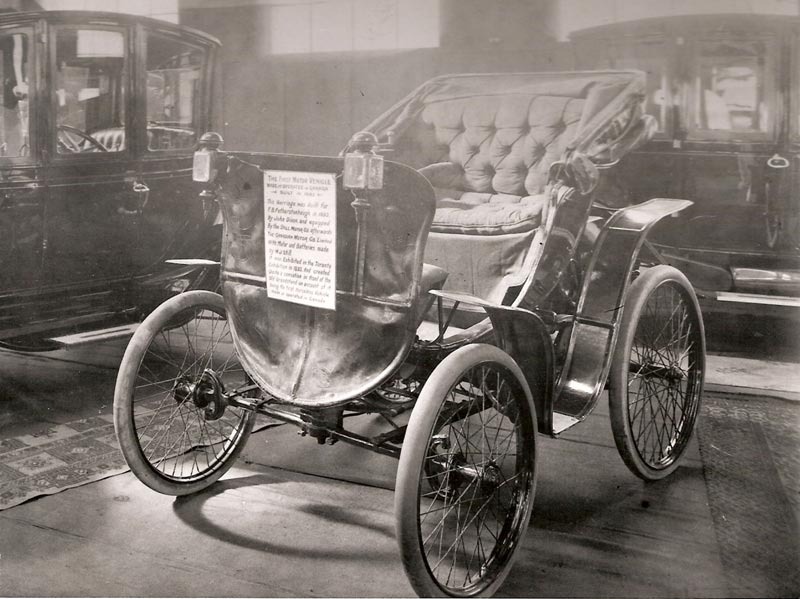
The 1893 Chicago World’s Fair, officially known as the World’s Columbian Exhibition, arrived just after the excitement of the 1889 World Exhibition in Paris, where visitors marveled at some of the world’s earliest motorized vehicles.
However, it was at the Chicago event that Americans got their first real glimpse into the future of transportation—an electric vehicle.
William Morrison, a Scottish immigrant who settled in Des Moines, Iowa, in 1880, was the man behind this early electric vehicle.

A chemist by training, Morrison had developed a keen interest in electricity and batteries. In the basement of a jewelry store, he worked tirelessly to create a lightweight battery of his own design.
By 1887, he had successfully used this battery to power a prototype automobile—a carriage built by the Des Moines Buggy Company that featured an electric engine driving just one wheel.
Morrison brought an updated version of his electric buggy to the 1893 fair, where it stood out as one of the first electric vehicles ever showcased to the American public.
The only other automobile on display was the Daimler “quadricycle,” a gas-powered vehicle that looked more like a bicycle than what we think of as a car today.
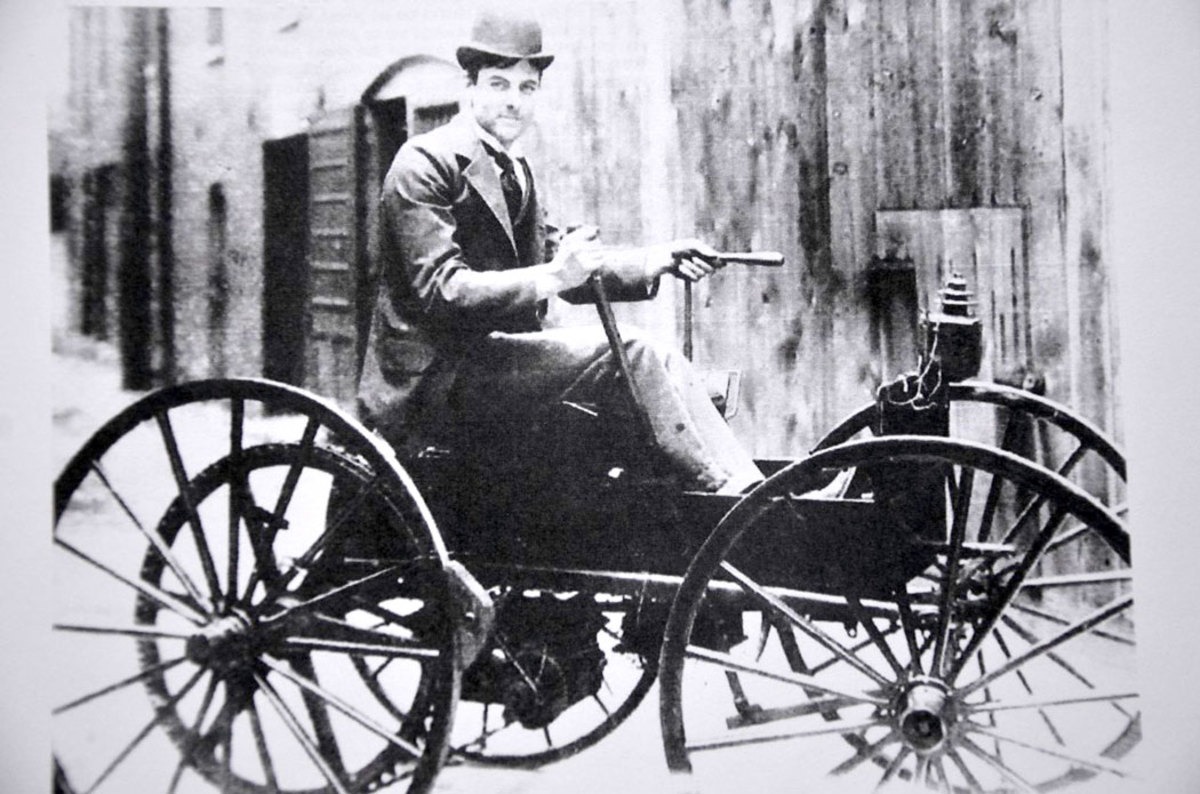
“That’s not an accident,” says Kevin A. Wilson, reflecting on the time when bicycles had just revolutionized transportation in the 1880s.
“Some of the earliest cars—even Henry Ford’s first model that he built in his shed—they referred to them as ‘quadricycles.’ Some of them were quite literally that—two bicycles with a very rudimentary platform across them powered by a very rudimentary engine.”
With its innovative battery-powered engine, Morrison’s electric buggy offered a bold contrast to these early gas-powered quadricycles.
1894: The first electric car with regenerative braking was introduced
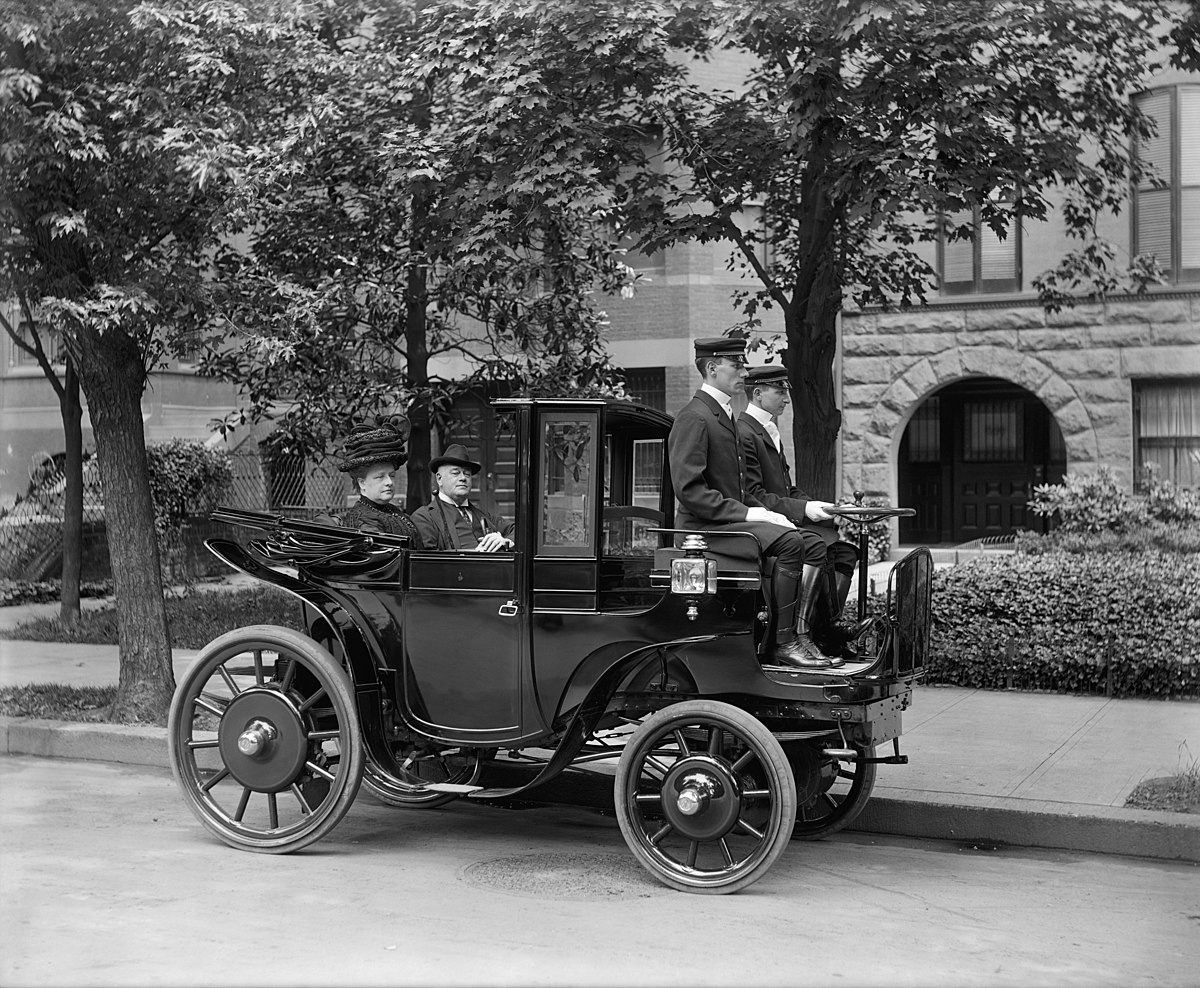
Louis Antoine Krièger was a forward-thinking inventor and a contemporary of Charles Jeantaud in France. Like Jeantaud, Krièger was determined to carve out a market for horseless, motorized carriages in Paris, with a particular focus on taxicabs.
“In those days, they were literally horseless carriages, and that applied to gasoline cars as well,” notes Kevin A. Wilson.
“The steam cars ended up looking a little different a little earlier because of the necessity of having a boiler, which was bigger and heavier than gas or electric engines.”
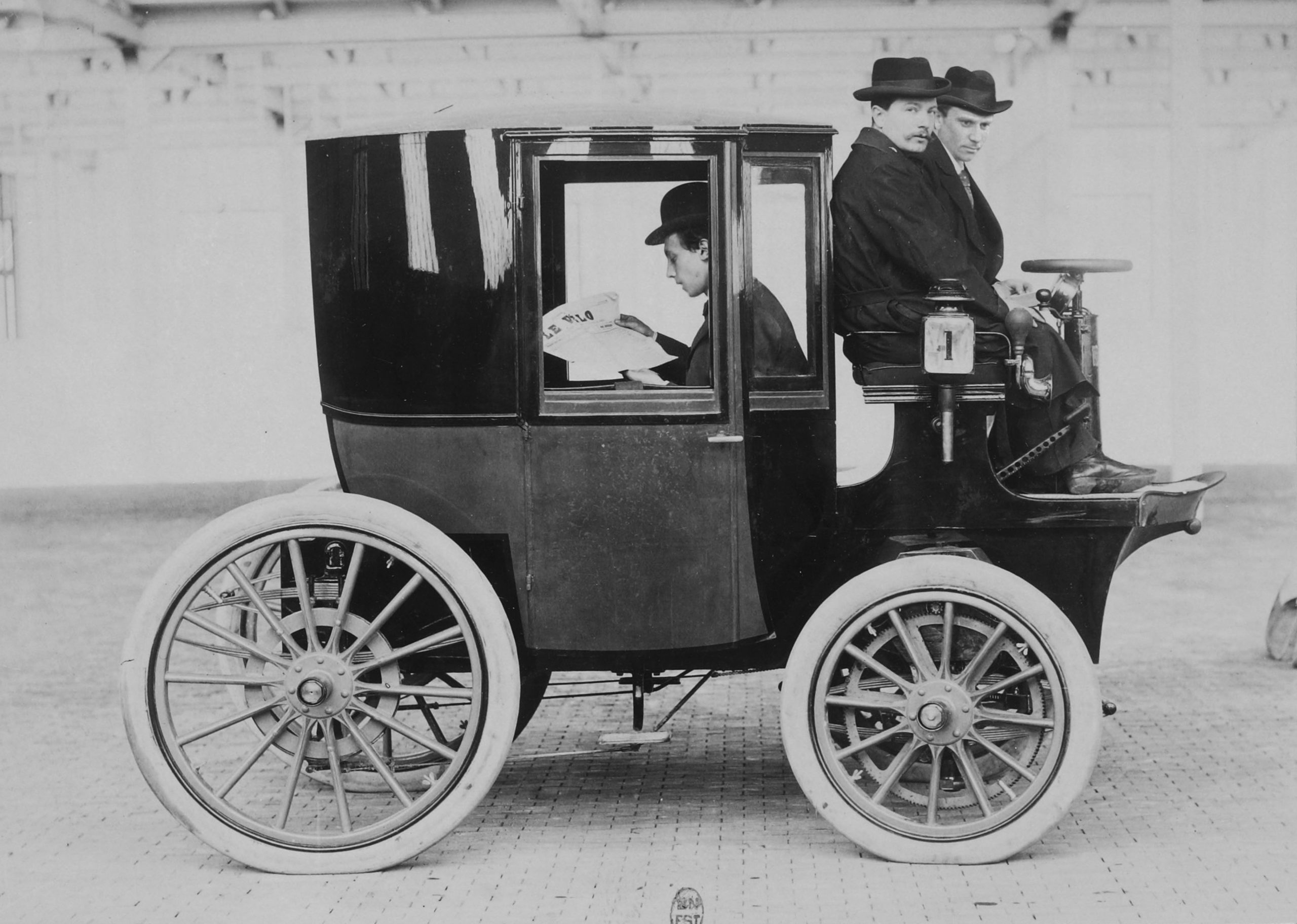
Krièger was an electrical engineer, a relatively new profession at the time, and he applied his expertise to create a unique DC motor. This motor was mounted on the front axle of the carriage and powered the two front wheels.
Remarkably, Krièger’s motor featured regenerative braking—a process where the motor would recharge the electric battery during braking. This innovative technology wouldn’t reappear in modern hybrid and electric vehicles until nearly a century later.
1897: Electric taxicabs began operating in New York City

Electric and hybrid taxis are a common sight in major cities today, but fully electric taxicabs were already transporting wealthy New Yorkers more than a century ago.
The brains behind these early electric taxis were Pedro Salom and Henry Morris from Philadelphia. Their first electric car was called the Electrobat—an unusual name, with “bat” referring to the battery, not the winged creature.
The original Electrobat was more like a tank than a car, weighing a hefty 4,400 pounds due to its 1,600 pounds of lead-acid batteries.
Salom and Morris introduced the Electrobat 2, a lighter version that weighed just 1,800 pounds. They sold this model to the Electric Vehicle Company (EVC), a New York taxi startup.
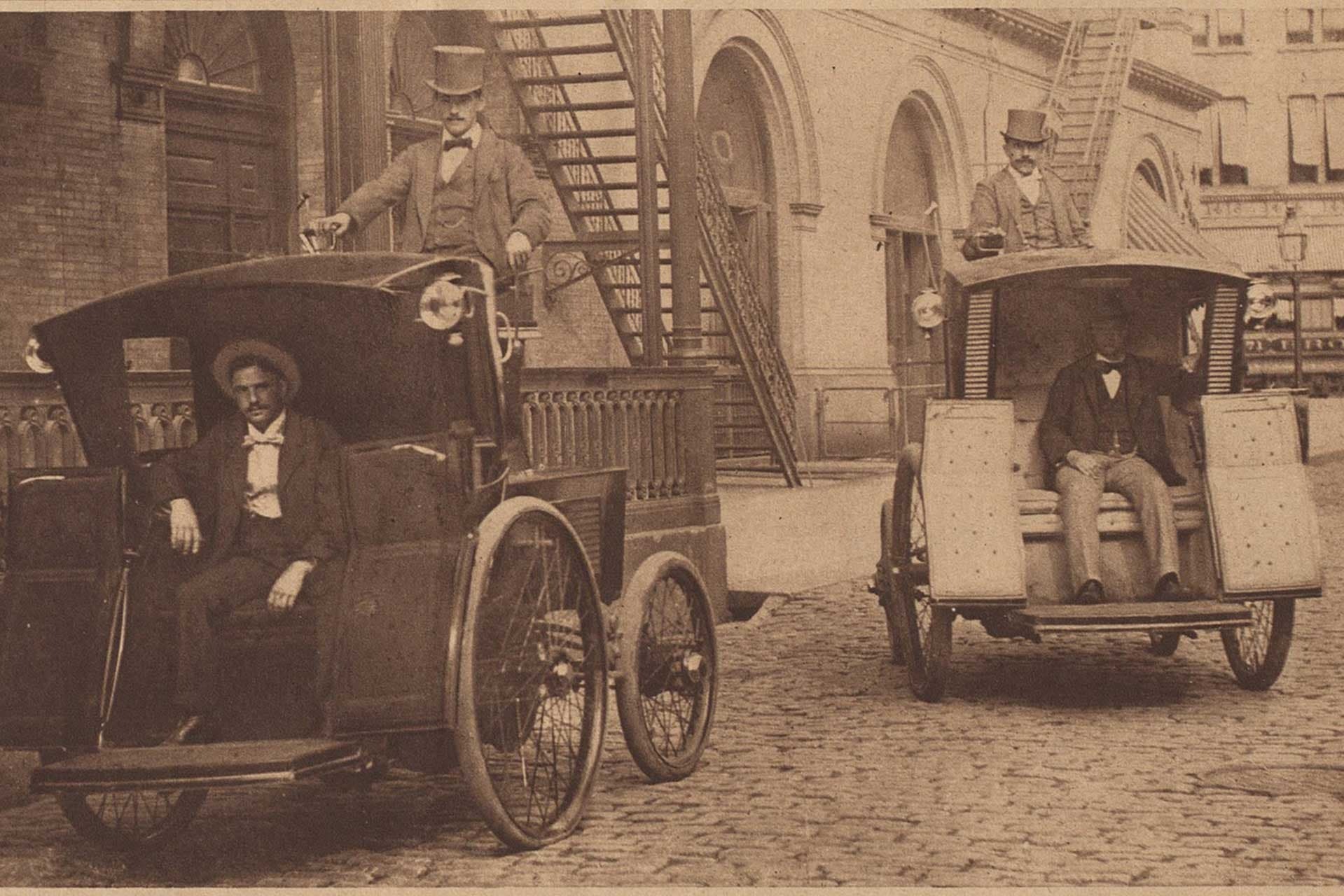
By the turn of the century, the EVC had a fleet of 200 electric taxicabs cruising the streets of New York. Instead of recharging the batteries, which was a time-consuming process, the EVC came up with a clever solution.
They bought an old ice skating rink on Broadway and transformed it into a battery-swapping station.
“It was a fascinating operation,” says Kevin A. Wilson. “When a battery was depleted, they’d roll the taxi into this converted ice arena, drop the old battery out of the bottom of the car, and load in a fully charged one. Off they went.”
Electric taxis seemed poised for success at the turn of the century, but unfortunately, the Electric Vehicle Company fell victim to greed and mismanagement, bringing an end to what could have been a thriving business.
1899: An electric vehicle became the first to exceed 60 mph
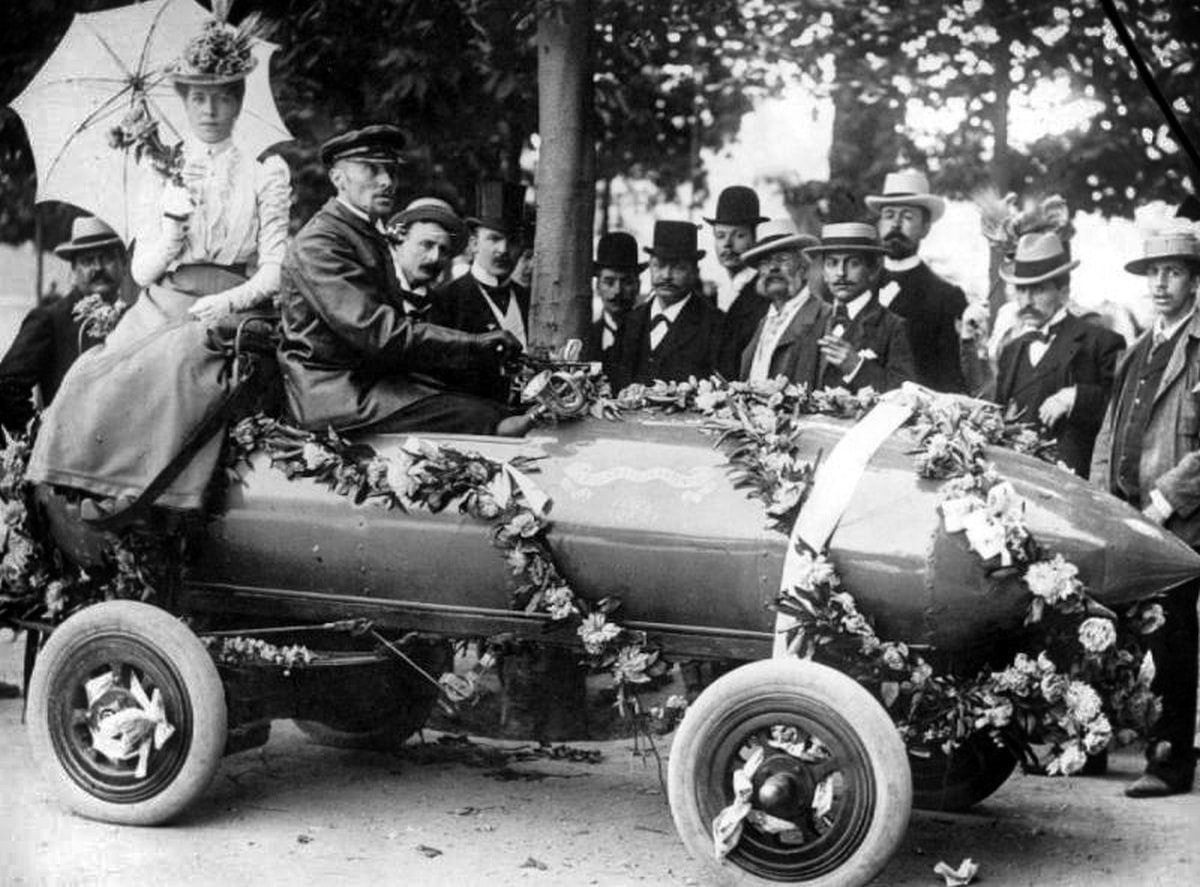
Long-distance road races and speed trials were a huge part of 19th-century automobile culture. Although electric vehicles often struggled in long-distance competitions—due to the need for frequent battery recharges or swaps—they excelled in short sprints.
In 1899, Belgian engineer and electric car enthusiast Camille Jenatzy made a splash with his rocket-shaped racer, “La Jamais Contente” (“Never Satisfied”).
Jenatzy became the first driver to break the 60-mph (100-kph) barrier, reaching an impressive speed of 65.8 mph—all in an electric car.
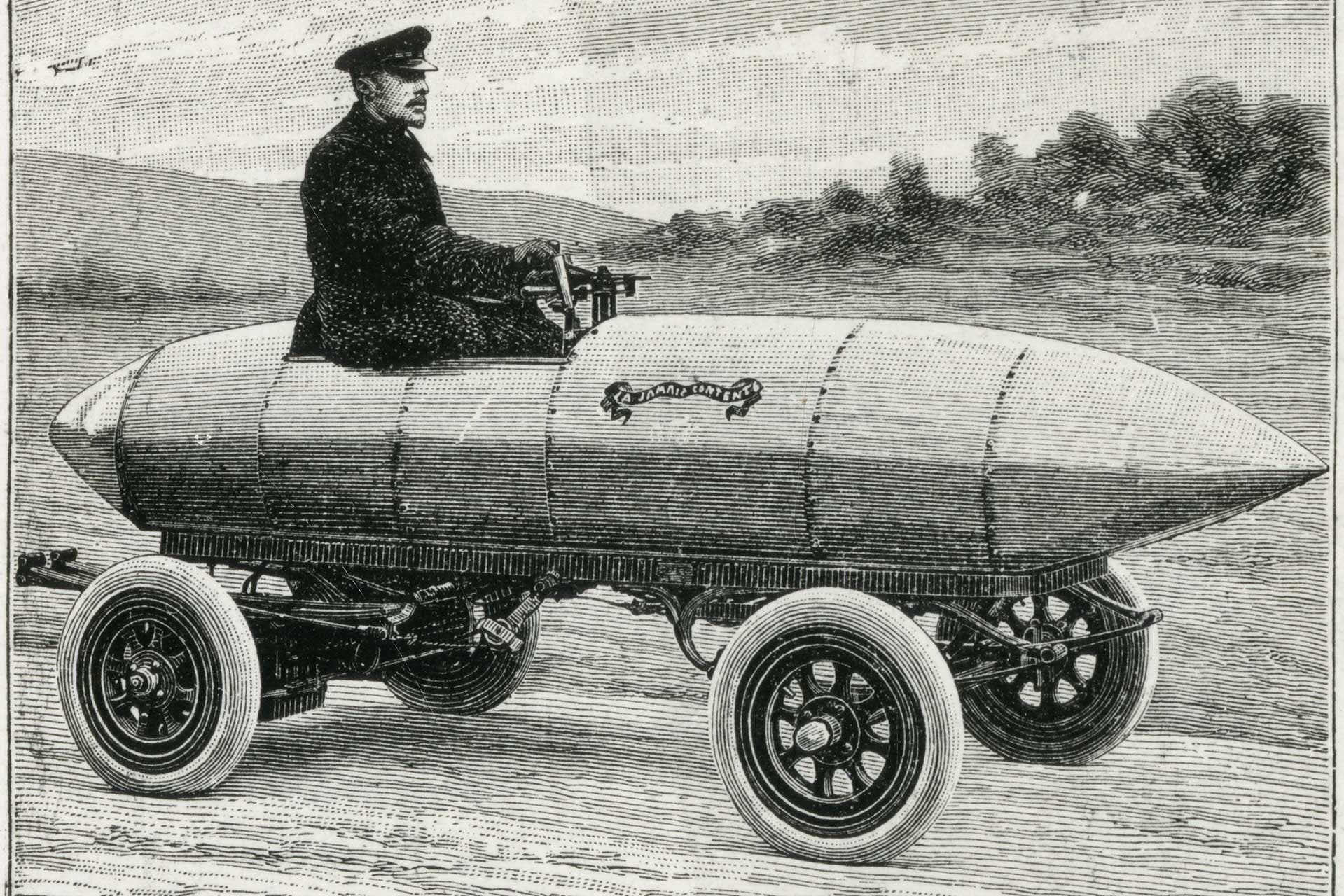
The secret behind this record-breaking speed was the car’s powerful setup. It ran on 100 two-volt batteries that powered two electric motors, producing a combined 67 horsepower. But what truly gave Jenatzy the edge might have been the tires.
“Unlike most cars of the time, which had solid wooden wheels,” Jenatzy collaborated with Edouard and André Michelin to outfit his car with four pneumatic rubber tires, says Wilson.
This smart choice likely played a key role in Jenatzy’s success, proving that electric vehicles could be real contenders in the fast-paced world of early automobile racing.
1914: Henry Ford bought his wife an electric car

Henry Ford, perhaps more than anyone, played a key role in making gas-powered cars the dominant force of the 20th century. With the introduction of the Model T in 1908, Ford made car ownership affordable and accessible to the average American.
However, Ford wasn’t opposed to electric vehicles. In fact, he and his close friend, Thomas Edison, spent years trying to create an affordable electric car under the Ford brand. They saw the clear advantages electric cars had over early internal combustion engines.
“You could hop in an electric car and drive away, which was not the case for the internal combustion car until 1912 at least,” says Kevin A. Wilson.
“They didn’t have electric starters before then, so you had to hand crank that thing to get the engine turning enough to make the magneto work to make the spark. It took some muscle.”
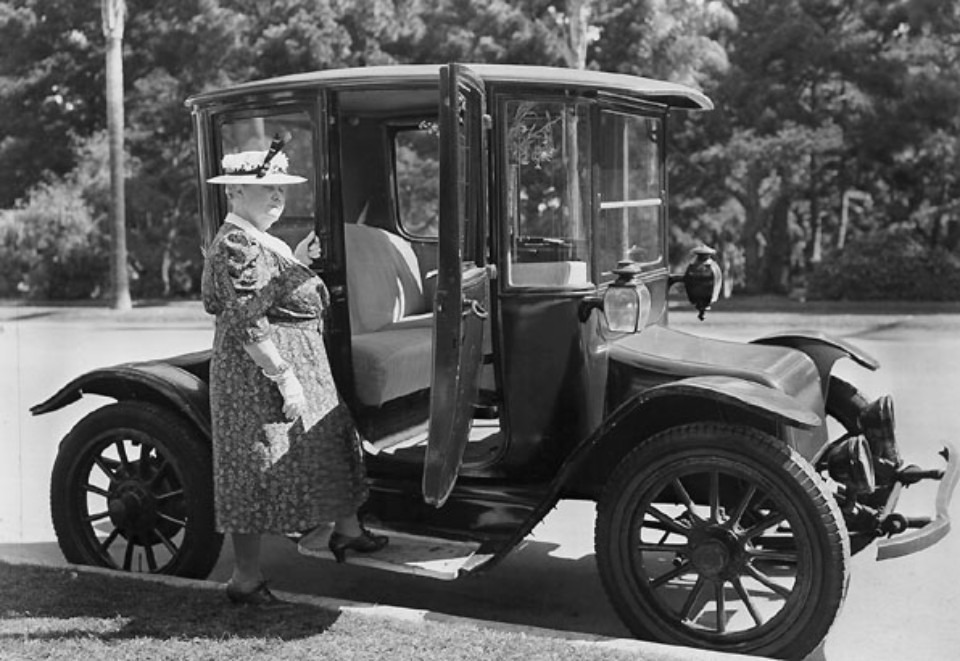
Electric engines were also quieter and cleaner, especially when compared to the loud noise and thick exhaust of early gas-powered and steam engines.
The main challenge, however, was the cost. Electric cars were significantly more expensive than Ford’s Model T. In 1914, Ford bought his wife, Clara, a stylish electric car from Detroit Electric, a company that marketed its easy-start vehicles to women.
The price difference was striking: the electric car cost $3,730, while a 1914 Model T was just $440.
Despite their efforts, Ford and Edison couldn’t make electric vehicles as affordable as the Model T, and the electric car remained a luxury item, out of reach for most people. This pricing disparity ultimately ensured the dominance of gas-powered cars in the years to come.
1920: Internal combustion engines took over the market

The decline of electric vehicles began in 1903 when Clyde J. Coleman secured a patent for an electric automobile starter. A decade later, Charles Kettering at General Motors refined Coleman’s concept, installing the first electric starter in a 1912 Cadillac.
Before this innovation, starting a gas-powered car was a physically demanding task, requiring a strenuous crank of the engine.
The introduction of a battery-powered electric starter made this cumbersome process obsolete, marking a significant shift in automotive technology.
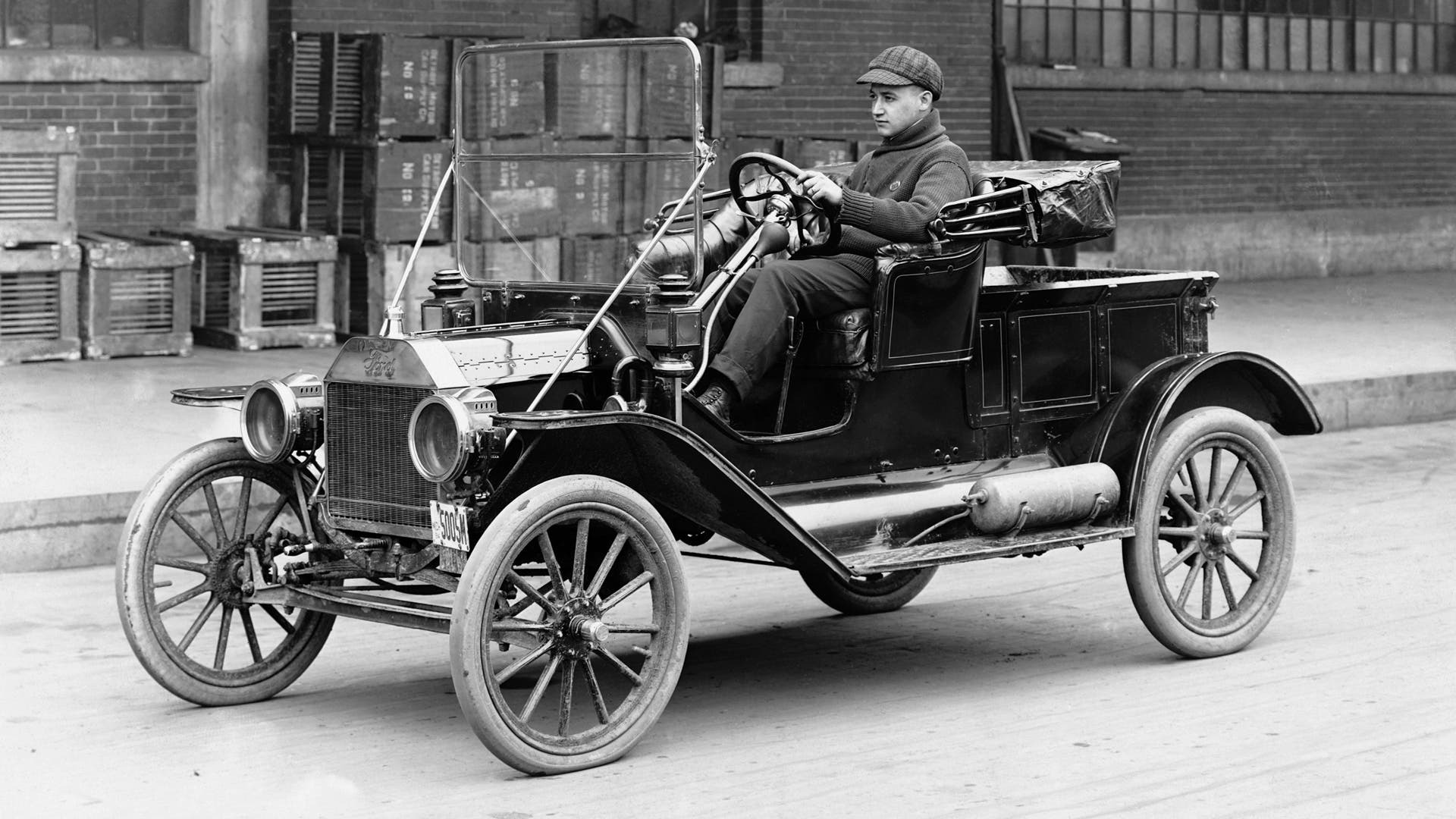
Ironically, the very electricity and batteries that powered early electric vehicles also enabled the rise of the internal combustion engine.
“It wasn’t until after World War I that electric starters became a common option on Model Ts,” notes Kevin A. Wilson. “By 1920, the balance had pretty much tipped away from electric and toward gas for good.”
This advancement in starting technology played a crucial role in steering the automotive industry toward gasoline-powered vehicles, signaling the end of the electric car’s early prominence.

